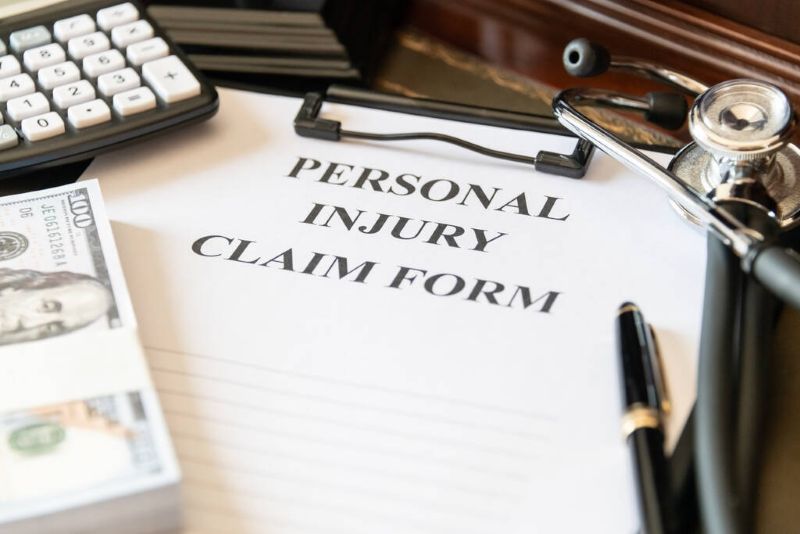6 min read
1158 words
Timing your personal injury settlement is more than just a matter of patience, it’s about understanding the legal journey and how each step impacts the final outcome. There’s a rhythm to these cases that doesn’t always follow a neat, predictable path. Between managing recovery and dealing with insurance companies, knowing what moves the process forward, and what can stall it, is key. With the right legal support, especially from professionals who’ve handled countless personal injury cases, the timeline becomes clearer and more manageable. Skilled attorneys like those at Cartee & Lloyd know how to balance precision with urgency, making sure nothing is overlooked while working toward a fair and timely resolution.
When Fast Isn’t Always Better
A quick settlement might sound appealing, especially when medical bills are waiting and workdays have been lost. But speed without strategy can leave too much on the table. Insurance companies often know this and may present early offers that fall short of what’s fair. Those offers come wrapped in promises of convenience, but behind them is often a hope that injured clients won’t dig deeper, won’t ask questions, and won’t seek the advice of someone who understands how much a claim is truly worth.
The right attorney looks beyond that first offer. They take the time to investigate, calculate long-term damages, consult with medical experts, and understand how the injury will affect daily life months or even years down the road. That kind of attention to detail is what ensures the settlement reflects not just what’s already happened, but what’s still ahead.
The Legal Timeline: A Closer Look

Understanding the general flow of a personal injury claim helps make sense of why timing matters so much. Most cases follow a familiar structure:
- Medical treatment and recovery
- Case investigation and documentation
- Demand letter submission
- Negotiations and settlement discussions
- Litigation (if necessary)
- Final resolution and payment
The first few steps are where most of the groundwork happens. This is when evidence is gathered, injuries are evaluated, and a clear picture of the accident’s impact is built. Rushing through this part creates weak foundations. Slowing down, however, doesn’t mean dragging things out unnecessarily, it means moving with intention, gathering what’s needed, and preparing for the negotiation ahead.
What Slows a Settlement Down?
Some delays are simply part of the process. Healing takes time. So does collecting records, securing expert opinions, or waiting for a specialist to weigh in on long-term injuries. But other slowdowns are avoidable, especially when the right systems and strategies are in place.
- Missing documentation
- Disorganized case presentation
- Ineffective communication with insurers
- Lack of follow-up on stalled negotiations
- Failure to recognize when a case is ready for demand
These issues can stretch a case from months into years. That’s where experienced attorneys make a difference. At Cartee & Lloyd, the focus is always on building strong cases from day one, with the goal of reducing delay without compromising results.
Strategic Timing Is Not the Same as Waiting
It’s important to understand that smart timing is not passive waiting. It’s calculated, responsive, and rooted in experience. Skilled attorneys monitor the healing process closely, wait until the medical picture is clear, and then move swiftly once the facts are strong.
They also prepare for resistance. Insurance companies may use delay tactics, hoping to wear down claimants. Legal teams with experience know how to spot these moves, counter them, and keep momentum on the client’s side.
There’s also timing involved in negotiation. Knowing when to accept an offer, when to push back, and when to escalate a case to litigation is part of the strategy. A case can be settled fairly and efficiently, but only with someone who knows how to read the situation.
Communication Keeps the Process Moving
One underrated key to avoiding delays is simple, proactive communication. Regular updates, prompt responses to requests, and clear explanations keep clients informed and cases moving. Lawyers who stay in touch with their clients, answer questions thoroughly, and update them at each stage create a smoother, less stressful experience.
This also builds trust. Clients who understand the process are less likely to feel anxious or pressured, and more likely to let the legal team do what they do best, fight for the right outcome.
What Makes Cartee & Lloyd Different?
Plenty of firms take personal injury cases, but not all bring the same mindset to the table. At Cartee & Lloyd, the priority is always results without unnecessary delays. That means building strong cases early, keeping communication open, and working toward a fair outcome that doesn’t compromise just to finish faster.
Clients aren’t treated like numbers or rushed through a system. Each case gets the focus it deserves, and each decision is made with the client’s future in mind. From the initial consultation to the final settlement, the team works to ensure timing aligns with both legal strength and personal needs.
Avoiding the Cost of Delay
There’s more at stake in a personal injury claim than a dollar amount. Delays can affect everything from a client’s financial stability to their emotional well-being. Prolonged legal battles add stress, uncertainty, and sometimes additional expenses. That’s why timing a personal injury settlement well isn’t just smart, it’s essential.
The cost of rushing is just as real. Accepting an early offer might seem like the path of least resistance, but it can result in long-term regret when future treatment or complications arise with no coverage in place. A well-timed settlement strikes the balance: fast enough to avoid dragging out pain and paperwork, but measured enough to ensure nothing gets missed.
When Litigation Becomes Necessary
Not every case settles through negotiation. Sometimes, the only way to secure a fair resolution is by filing a lawsuit. That decision can feel daunting, but it doesn’t mean a drawn-out court battle is guaranteed. Often, just showing a willingness to litigate brings insurers back to the table with more serious offers.
Skilled attorneys know how to prepare for this move without making it lightly. At Cartee & Lloyd, the goal is never to drag clients through unnecessary litigation, but to be ready when the situation calls for it. That preparedness alone often shifts the balance and encourages resolution without a trial.
Final Thoughts: Get the Timing Right

Timing your personal injury settlement is about more than deadlines and paperwork. It’s about knowing when to act, when to wait, and when to push. That kind of precision only comes with experience, strategy, and a real commitment to doing things right.
Reaching a fair settlement without the wait is possible. It just takes a team that understands the legal process, respects the human side of every case, and never stops working toward the best possible outcome. At Cartee & Lloyd, that’s not a promise, it’s a practice.
